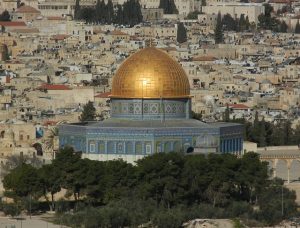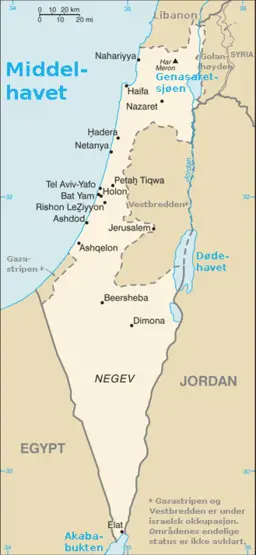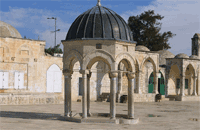 Where the real conflict lies.
Where the real conflict lies.
Israeli society is often misunderstood as a war of cultures; Arabs against Jews or Israelis against Palestinians. However, it is vital to know the finer details of a country’s unrest and in this case that detail is the division that is present within the folds of the Jewish community itself – between the Orthodox (Haredi and Dati) Jews and the Secular (Hiloni) Jews[i]. It is within this division in the governance of the country that primarily blocks the ability to create a peaceful and democratic future, and without this core stability on the inside there will never be stable relationships with cultures outside.
The central theme in this conflict of interest is whether religion and government should work as one or two separate organisations, independent from the influence of the other[ii]. It is the view of Orthodox Jews that government and religion should walk hand in hand, ensuring all citizens not only fear the weight of the law but also the rage of God in any wrongdoings. This would extend the churches right to judge on the basis of crime and for the court to punish religious non-conformists. On the opposing side of this argument are the Secular Jews who believe that government and religion should never run alongside each other. Instead the government should handle the fair and just running of the country while the church concentrates on the management of faith, and preparation for the spiritual judgement of God when someone dies. With such a contrast of views is it any wonder that Israel cannot agree any terms with others, when they cannot agree on terms for themselves.?
In the beginning there was Kibbutz.
Israel’s social system was largely influenced both politically and economically by the community enterprise, collaborative working and collective belief of the Kibbutz. Meaning “group” in Hebrew. A Kibbutz is a self-sufficient society that work for the good of everybody and not the progression of the individual. No work in the Kibbutz is valued above any other and everyone chips in, in times of struggle regardless of their skills or usual assignment. The social structure of the Kibbutz is very interesting in terms of its explanation of each person’s responsibility. You have five key subgroups in a Kibbutz; the Pioneers – these were the original founders of the Kibbutz, establishing the community. Then you have the Sabras who are direct descendants of the Pioneers. Next comes the Olim – those who have migrated to Israel in a Kibbutz or to join one from the USA, Australia, South Africa, Ethiopia, Russia and across Europe. Meaning Kibbutz often have a diverse history of origin, some not speaking Hebrew as their first language but adopting it as their main language once settled in the Kibbutz. From here you have the two main members of the community. The first is a Chaver – a full and permanent member of the Kibbutz and they can be in any of the aforementioned subgroups. These members have homes in the community, jobs, voting and decision rights. They also have access to all areas in the settlement as very little is considered as private to Chavers. The other type of member is called a participant – they are just a temporary resident of the Kibbutz and are considered as guests in the Chaver’s homes and are expected to treat them as so. Participants do not have voting rights and have restricted access to the site.
Regardless of these differences between members, a Kibbutz is a community based on equality and a focus on agricultural industry. This however could not be sustained as the main income of the community as they grew (currently 2.8% of Israel is represented by Kibbutz) they had to venture out into new industries such as furniture, household appliances and electronics. As the work increased each member had to take on more responsibilities for work and would sometimes even hire outside contractors to assist in the workload.
Adjusting to life in a Kibbutz is not always easy but can be extremely rewarding and is a very important part of Israel’s history and development.[iii]
Standing for your country.
Israel is one of a number of countries that still run conscription at the age of 18 for both men and women. In Israel it is compulsory for men to sign up for three years and women for just under two years. However, a further year can be added for officer’s training. Serving in the Israeli military is a point of national pride and comes with high expectations. The values of the military reflect those of the State. These values are reflected in obligations that all soldiers should fulfil.[iv] The first is “personal example”, this is not about uniform and personal conduct but relates more closely to the fact that all members of the Israeli military; officer or soldier are expected to complete a rotation of all duties, including frontline combat. This results in Israel having the highest officer to soldier casualty ratios in the world. This also means that all soldiers are trained to take command in the event that an officer is injured or killed. This leads on to the second obligation soldiers must uphold and probably one of the most important ones. The Israeli military believe in a strong and trusted comradeship – no one is left behind on the battlefield, one life saved is a world saved. The third of the four pillars of the military is to avoid the military becoming politicalised – this requires all soldiers to gain permission before any and every public appearance. It is also an offence to accept any gifts as a result of holding a particular position or rank. The final obligation is one you would find in any job – that of professionalism. Training is taken very seriously and it is well known that any officer above lieutenant Colonel has to have a BA degree and a number of officers already hold a Master’s degree. [v]
Save
Save











Leave a Reply